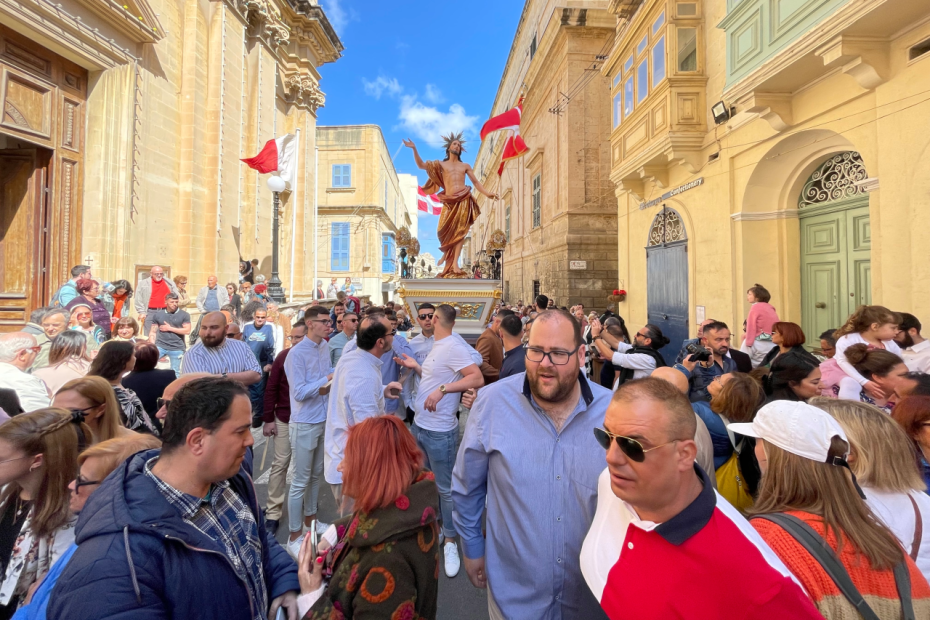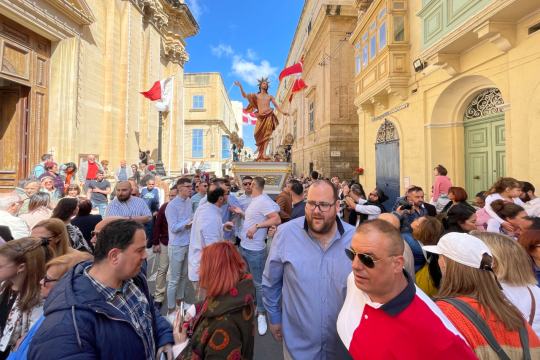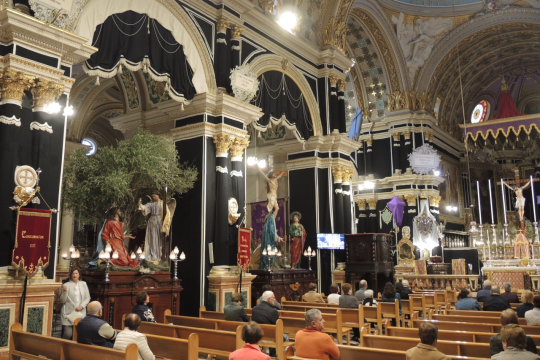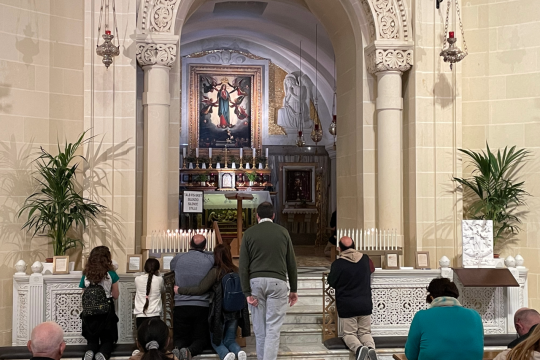
Malta, an island nation in the Mediterranean almost 200 km south of Sicily, is actually comprised of a group of islands quite close to each other, two of which are inhabited: Malta, home to about 480,000 people in 2021, and Gozo, home to about 39,000 people in 2021.1 Though part of the European Union, it lies further south in the Mediterranean than the North African cities of Tunis and Algiers. The country’s primary language, Maltese, is a Semitic language derived from Arabic but written in Latin script.2
National Demographics
Religious Affiliation
Chart source: Pew-Templeton Global Religious Futures Project, 2010
Total Population
432,089 1
Urban
94.6% 1
Rural
5.4% 1
Immigrants as % of Population
26.0% 2
Homicides
0.38 per 100,000 people (global median: 5.8) 3
Level of Public Corruption
51 (100 is very clean, 0 is highly corrupt) 4
Fertility Rate
1.20 live births per woman 5
Under-Five Mortality Rate
6.00 deaths per 1,000 live births 5
Life Expectancy at Birth
84 years 5
Adult Literacy Rate
93.31% 6
Male Youth Literacy Rate (15-24 years)
99% 5
Female Youth Literacy Rate (15-24 years)
100% 5
Internet Users
92% 6
GDP per Capita
US$29,737 5
Population Living Below US$2.15 per Day
0.3% 7
Gender Gap Ranking based on economy, health, education, and politics
70 (146 is the lowest ranked country; 1 is the highest ranked country) 8
Religious Freedom: Government Restrictions Index (GRI)
2 - Low
Religious Freedom: Social Hostilities Index (SHI)
0.8 - Low
- 1 United Nations, Department of Economic and Social Affairs, Population Division, World Urbanization Prospects: The 2018 Revision, Online Edition (New York: United Nations, 2018).
- 2 United Nations, Department of Economic and Social Affairs, Population Division, International Migrant Stock 2020 (New York: United Nations, 2020).
- 3 Data as of 2021. United Nations Office on Drugs and Crime, "Intentional Homicide," United Nations, Accessed April 9, 2024; United Nations Office on Drugs and Crime, Global Study on Homicide 2023 (Vienna: United Nations, 2023).
- 4 "2023 Corruption Perceptions Index," Transparency International, Accessed April 9, 2024.
- 5 United Nations Children's Fund, The State of the World's Children 2023 (Florence: UNICEF Innocenti – Global Office of Research and Foresight, 2023).
- 6 International Telecommunication Union, "Individuals using the Internet (% of population)," The World Bank, Accessed April 24, 2024.
- 7 Poverty and Inequality Platform, "Poverty headcount ratio at $2.15 a day (2017 PPP) (% of population)," The World Bank, Accessed April 24, 2024.
- 8 World Economic Forum, Global Gender Gap Report 2023 (Geneva: World Economic Forum, 2023).
- 9 As Pew describes it, "Government restrictions on religion include laws, policies and actions that regulate and limit religious beliefs and practices. They also include policies that single out certain religious groups or ban certain practices; the granting of benefits to some religious groups but not others; and bureaucratic rules that require religious groups to register to receive benefits." As noted on pp. 45-47 of the report, the index summarizes data from 19 sources. The index does not differentiate whether the laws are directed toward Catholics. Pew Research Center, Globally, Government Restrictions on Religion Reached Peak Levels in 2021, While Social Hostilities Went Down (Pew Research Center, 2024).
- 10 As Pew describes it, "Social hostilities include actions by private individuals or groups that target religious groups; they also include actions by groups or individuals who use religion to restrict others. The SHI captures events such as religion-related harassment, mob violence, terrorism/militant activity, and hostilities over religious conversions or the wearing of religious symbols and clothing." As noted on pp. 45-47 of the report, the index summarizes data from 19 sources. The index does not differentiate whether the hostilities are directed toward Catholics. Pew Research Center, Globally, Government Restrictions on Religion Reached Peak Levels in 2021, While Social Hostilities Went Down (Pew Research Center, 2024).
Catholic Demographics
These statistics are derived from the Vatican's official publication, Statistical Yearbook of the Church 2022 (Vatican City: Librera Editrice Vaticana, 2024). The numbers may differ from data reported by other sources on this site.
Baptized Catholics
418,000
Baptized Catholics as % of Total Population
80.15
Baptisms per Year (Under age 7)
3,125
Baptisms per Year (Over age 7)
38
First Communions per Year
3,154
Confirmations per Year
3,293
Students Enrolled in Catholic Primary Schools
7,484
Students Enrolled in Catholic Secondary Schools
8,223
Students Enrolled in Catholic Higher Education
118
Church Marriages per Year
1,303
Church Marriages in Which Both Spouses are Catholics
1,241
Priests: Diocesan
399
Priests: Religious
286
Priests
685
Women Religious (Nuns & Sisters)
726
Catholics per Priest
610
Parishes
85
Mission Stations (no resident priests)
0
Catholic Hospitals
0
Homes for Aged, Handicapped, Invalids
16
Published:
Last Modified:







